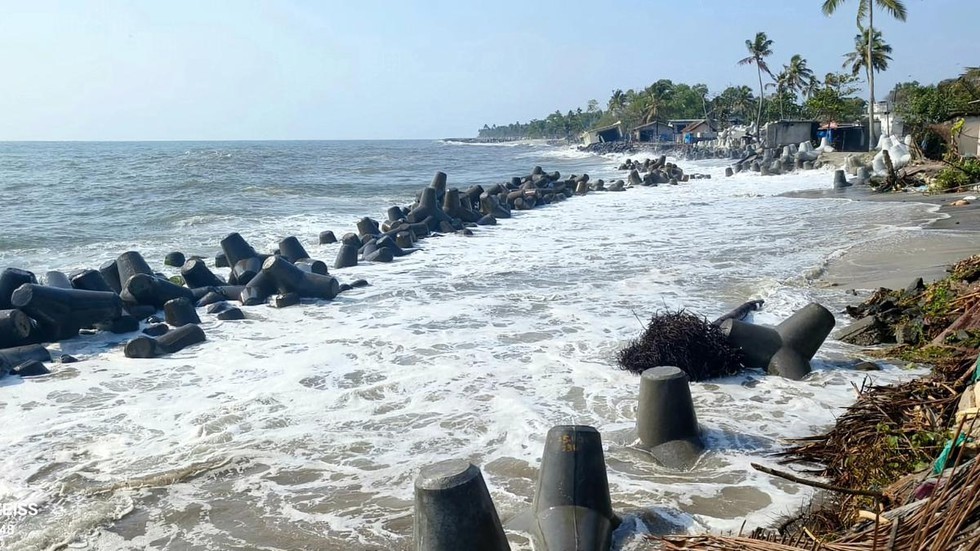
Swell waves

04.04.2024
Swell waves
|
For Prelims:About Swell waves,Formation of Swell waves,Features of Swell waves, Kallakkadal, Indian National Centre for Ocean Information Services (INCOIS) |
Why in the news?
Recently, swell waves inundated coastal areas in central and southern districts of Kerala.
About Swell waves:
- A swell is the formation of long wavelength waves on the surface of the seas. These are composed of a series of surface gravity waves.
- In India early warning systems like the Swell Surge Forecast System launched by the Indian National Centre for Ocean Information Services (INCOIS) in 2020 gives forewaring seven days in advance.
Formation of Swell waves:
- They occur not due to the local winds, but rather due to distant storms like hurricanes or even long periods of fierce gale winds.
- During such storms, huge energy transfer takes place from the air into the water, leading to the formation of very high waves.
Features of Swell waves:
- Swells have a narrower range of frequencies and directions than locally generated wind waves, because swell waves have dispersed from their generation area, taking on a more defined shape and direction.
- These waves can propagate in directions that differ from the direction of the wind, in contrast to a wind sea.
- Their wavelengths may rarely exceed more than 150 m. Occasionally, swells which are longer than 700 m occur as a result of the most severe storms.
- It occurs without precursors or any kind of local wind activity and as a result.
Kallakkadal:
- It is a colloquial term used by Kerala fishermen to refer to flash flooding events.
○In Malayalam, Kallan means thief or mischievous one and Kadal means sea.
- Fishermen use the term ‘Kalla Kadal’ to refer to the unusual occurrence of high swell waves during good weather.
- According to weather experts, the phenomenon is triggered by storms as far away as the Antarctic region.
- These are caused by meteorological conditions in the Southern Ocean, south of 30°S.
- After travelling thousands of kilometers across the ocean basin, the swell intensifies when it encounters a coastal current, a phenomenon known as remote forcing.
- These usually occur along the southern coast of India, mainly during the pre-monsoon period, in April and May during clear weather conditions.
- In 2012, UNESCO formally accepted the term for scientific use.
Indian National Centre for Ocean Information Services (INCOIS)
- It was established as an autonomous body in 1999 under the Ministry of Earth Sciences (MoES).
- It is mandated to provide the best possible ocean information and advisory services to society, industry, government agencies and the scientific community through sustained ocean observations and constant improvements through systematic and focussed research.
- Indian Tsunami Early Warning Centre (ITEWC) of INCOIS is a Regional Tsunami Service Provider (RTSP) to provide tsunami warnings to countries on the Indian Ocean Rim.
- It also provides daily advisories to fisher folk to help them easily locate areas of abundant fish in the ocean.
- These advisories called Potential Fishing Zone Advisories are issued in Hindi, English and 8 vernacular languages.
Source: Indian Express